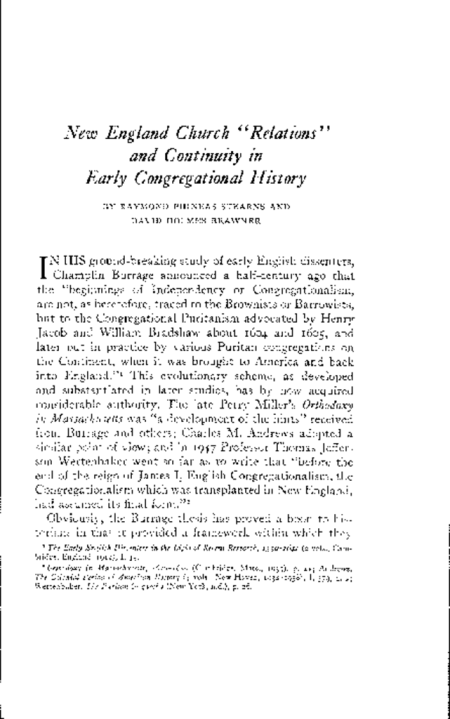Supports the thesis "that the New England Way was first formulated in England, and first tested in the Netherlands...." Refutes the contention presented by Edmund S. Morgan, 'Visible Saints: The History of a Puritan Idea' (New York: New York U. Press, 1963) and Geoffrey Nuttall, 'Visible Saints: The Congregational Way, 1640-1660' (Oxford, 1957), that the New England way, "conceived as a state religion, first took root in New England...by a sudden mutation of the Separatist strain in Puritan thought." Stearns and Brawner contend that public statement by a candidate for admission to the church of his spiritual experience "was not an innovation embodying a new standard of purity, but a technical adaptation of the old standard" to the new problem facing the "Saints" in New England - a crowd of strangers seeking church membership which now opened the way to political privilege and social prestige instead of to persecution and martyrdom as in the Old World.
New England Church "Relations" and Continuity in Early Congregational History.
Publication Date
Volume
75
Part
1
Page Range
13-45
Proceedings Genre
